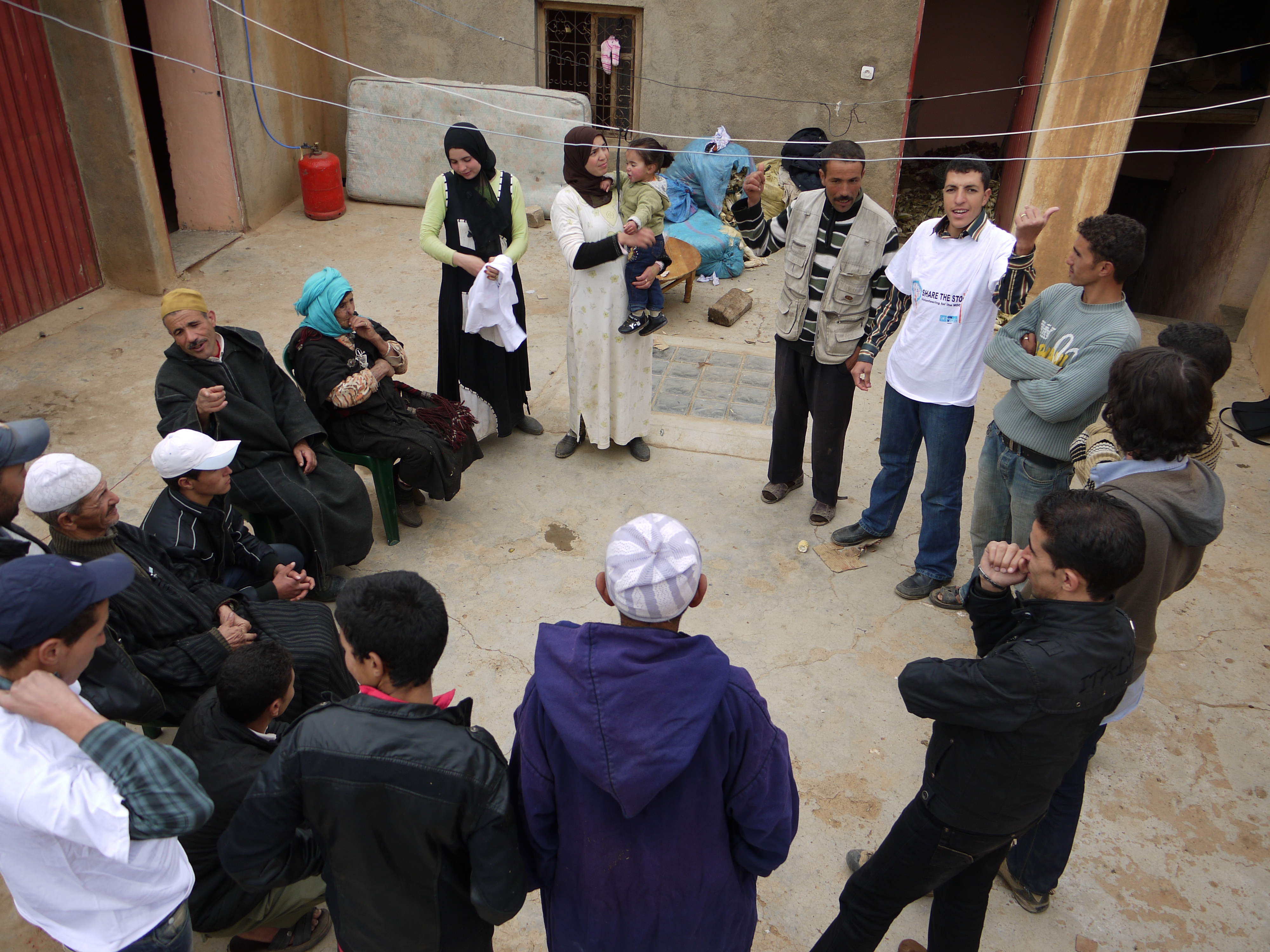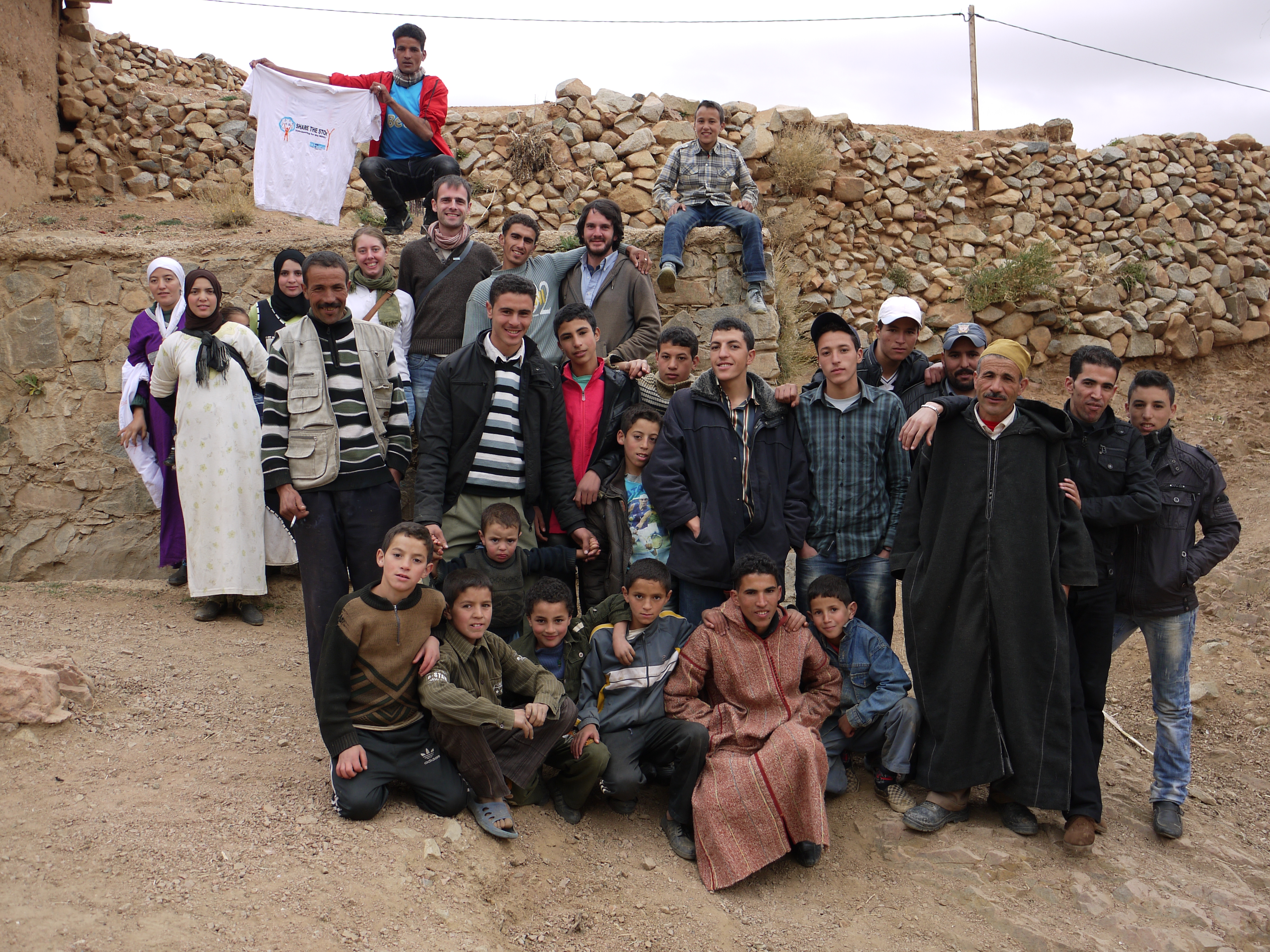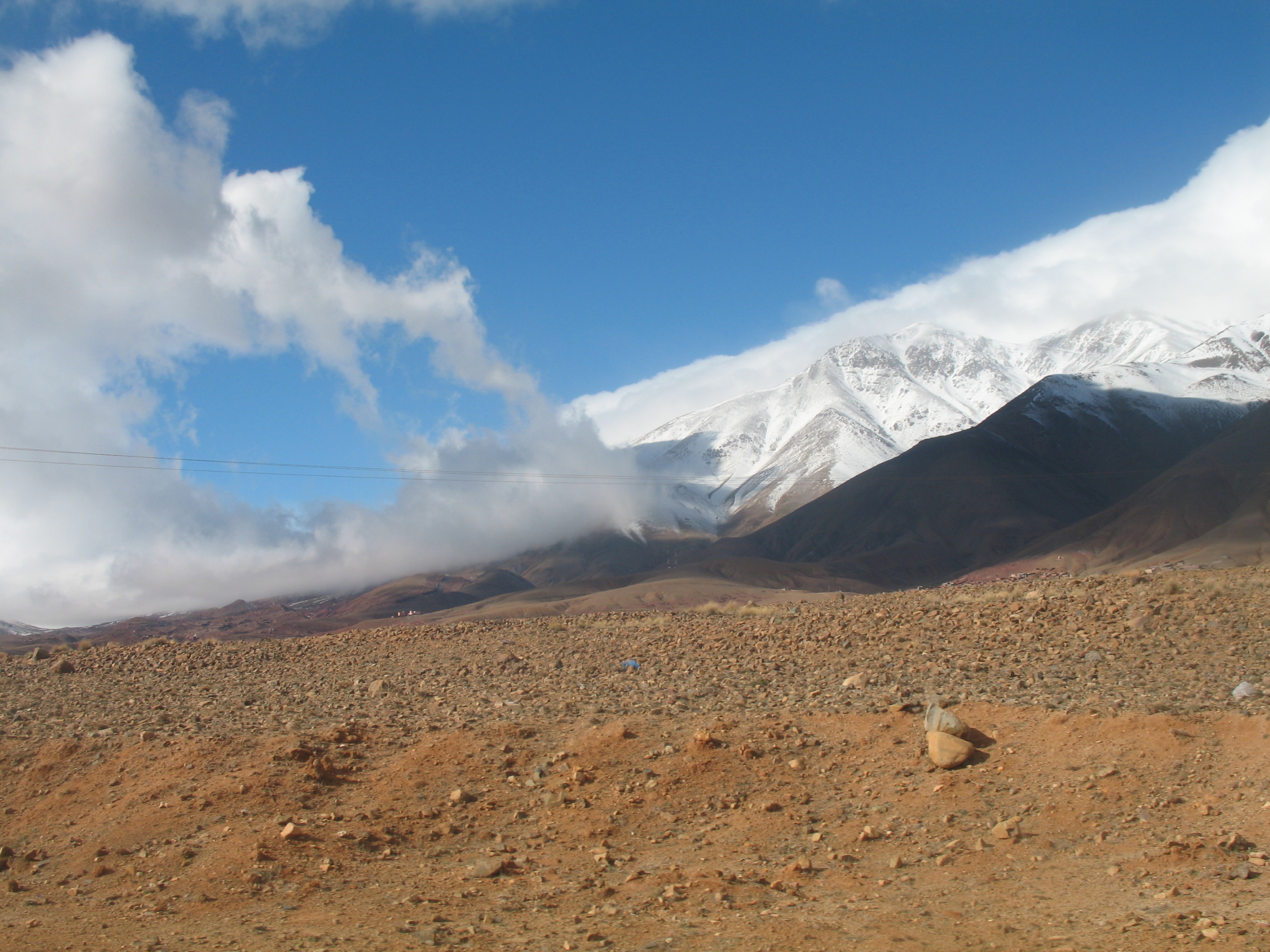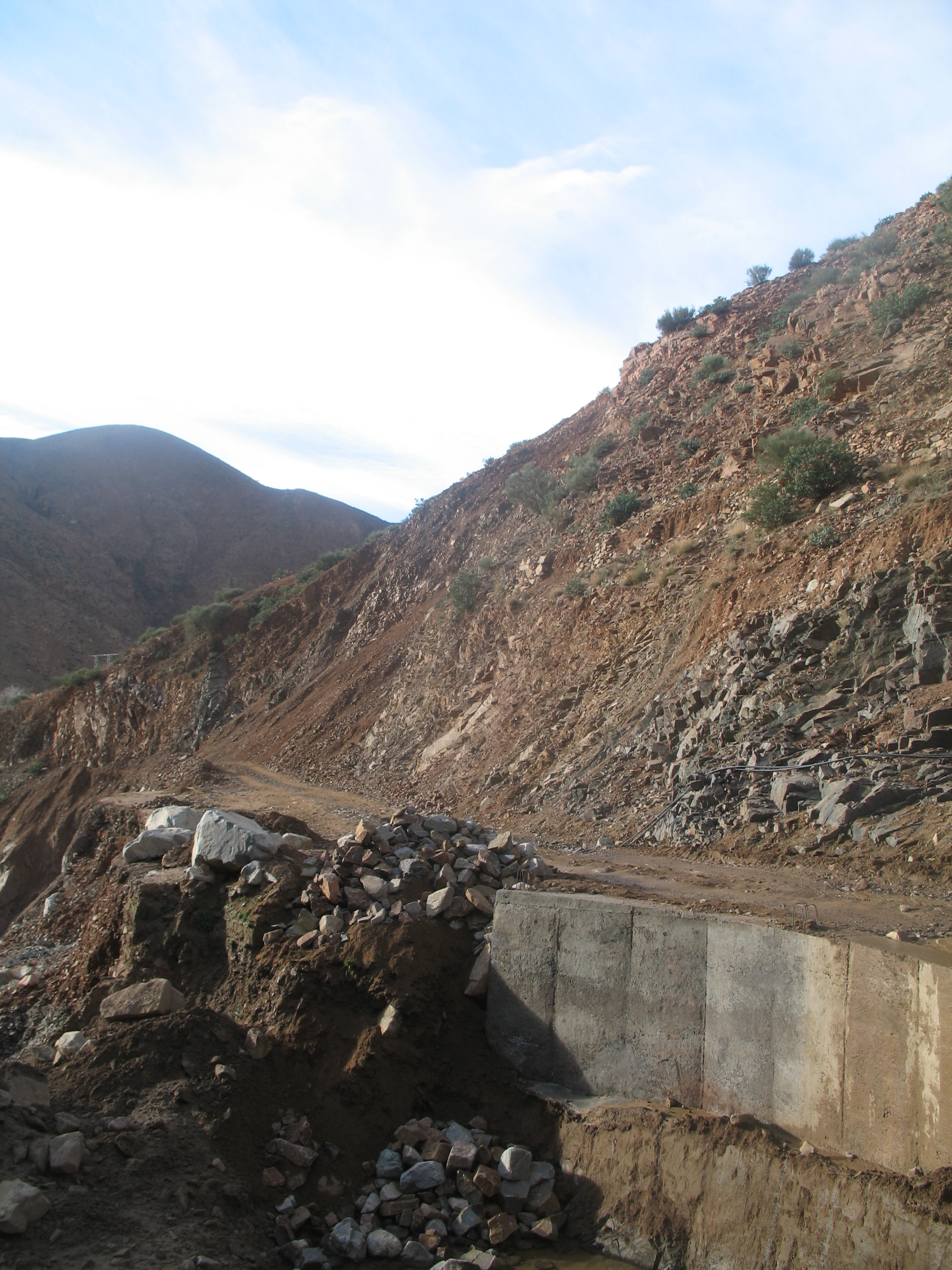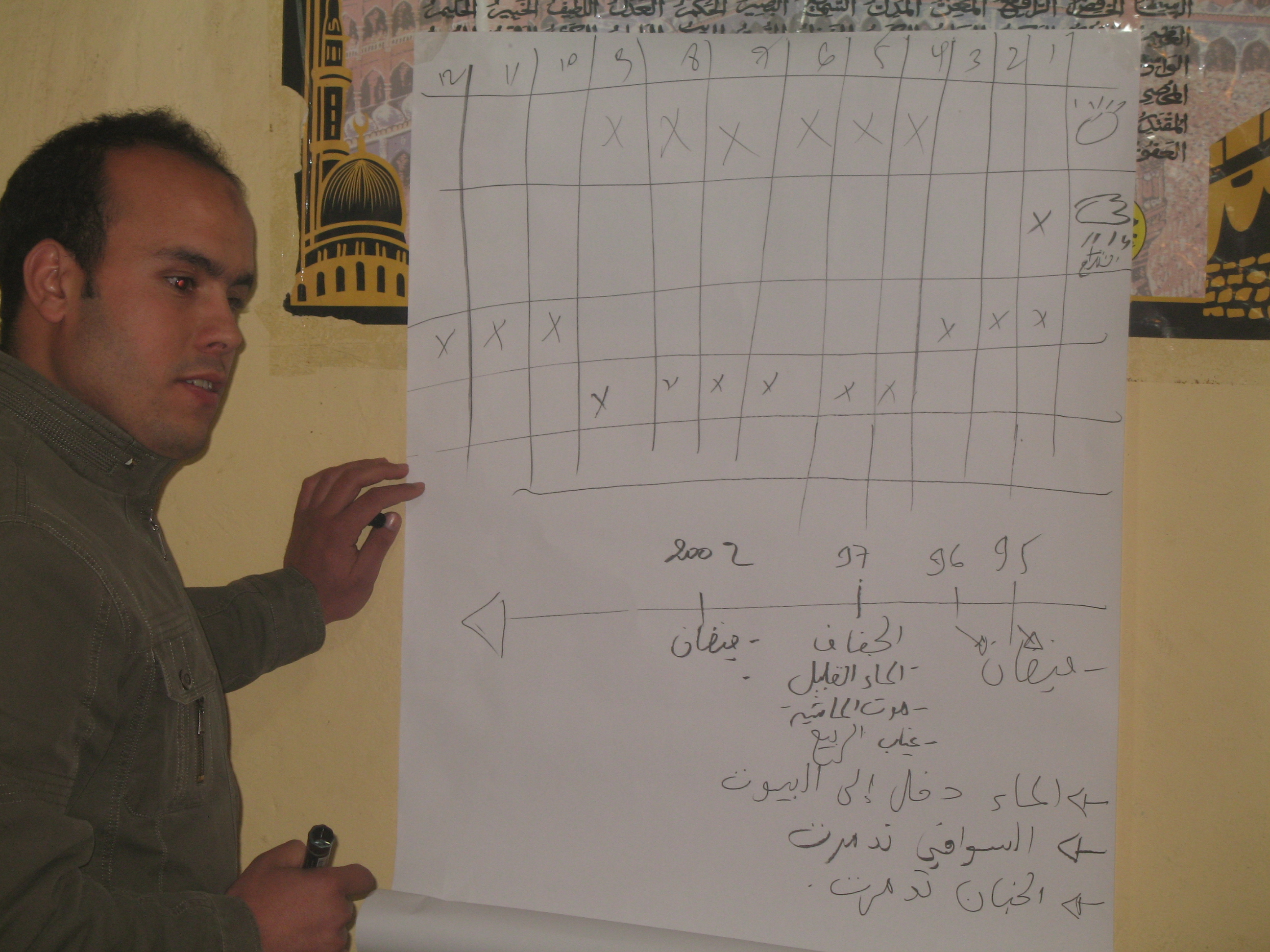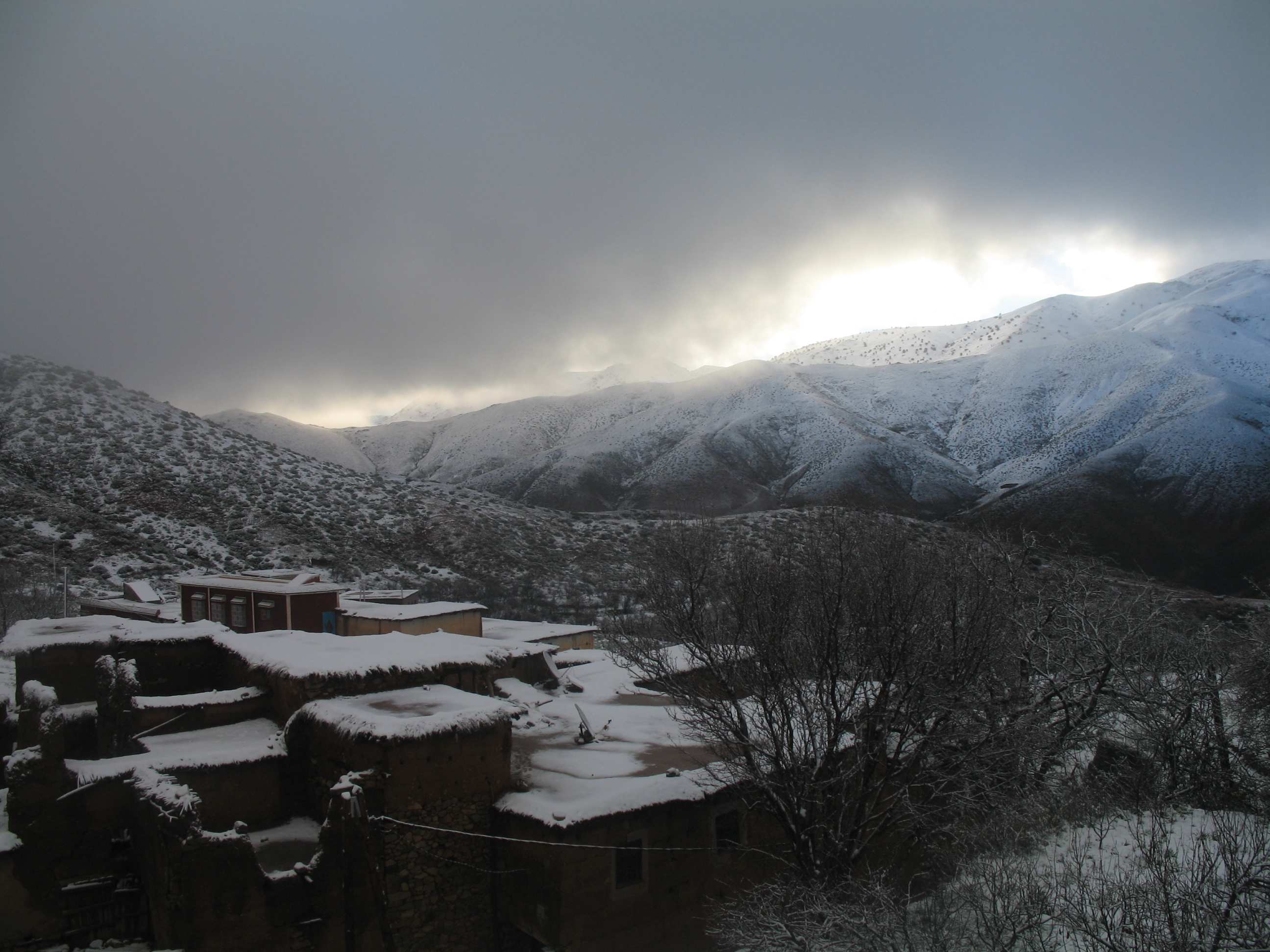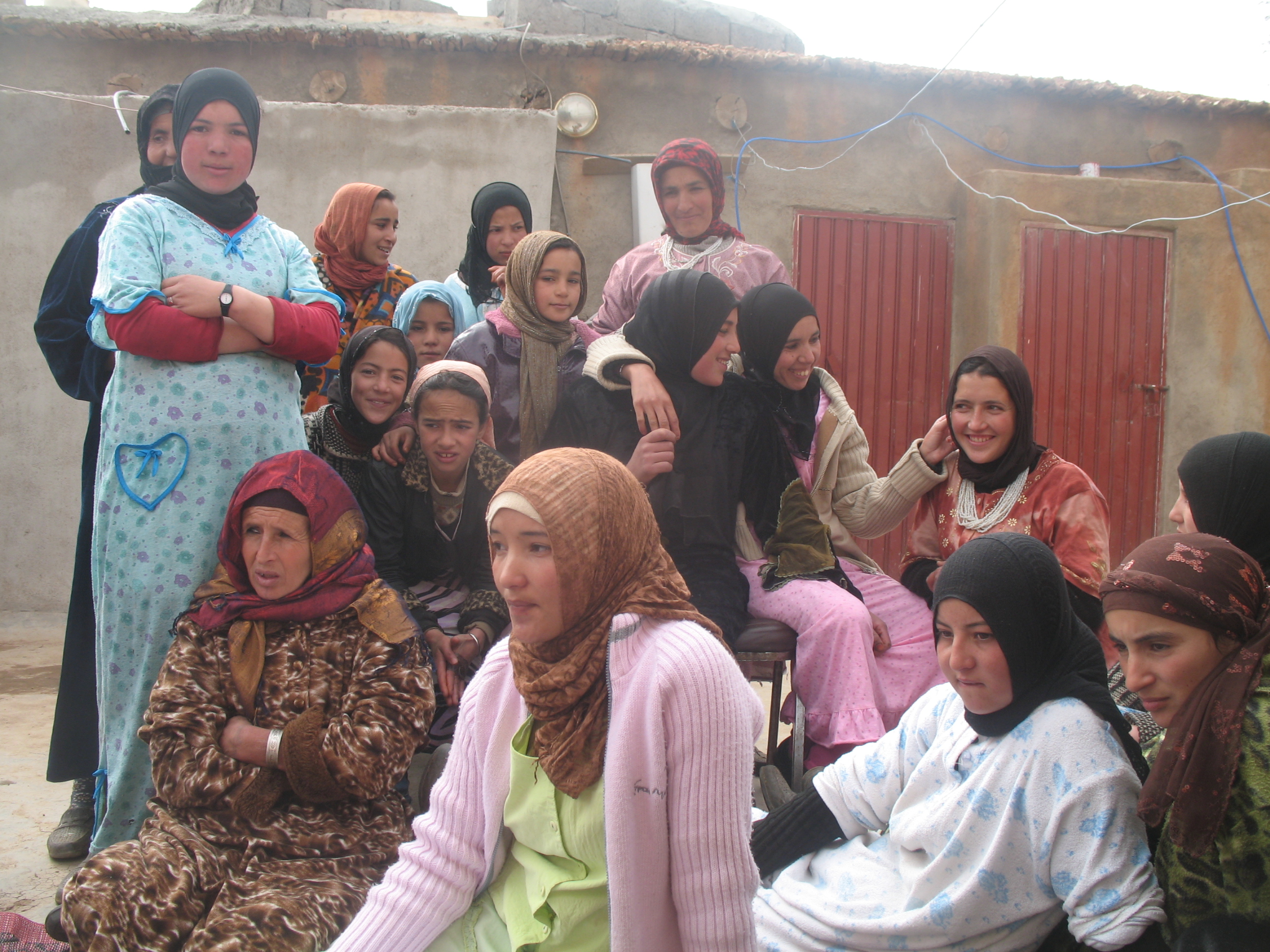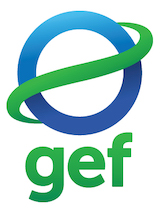CBA Morocco: Land & Water Protection, Conservation Farming and Climate Risk Management in El Mouddaa (Amsing)
Project Overview
Douar El Mouddaa is a subsistence farming community located on the southern slopes of the High Atlas Mountains in Toubkal National Park, Morocco. The most immediate and visible impacts of climate change involve erosion and extreme weather events. Isolation and limited access to health and education contribute to the community’s high vulnerability. Increasingly poor harvests are beginning to dramatically alter the community’s social and structural facets. Limited or poor quality harvests are forcing families to seek alternative means of income-generation, often resulting in an exodus of young men to the larger cities for work.
This Community-Based Adaptation project aimed to reinforce the resilience of the local ecosystem and strengthen the capacity of local community members to adapt to increasingly erratic and extreme weather. In particular, flood risks were addressed through a combination of biological & mechanical corrections aiming at ecosystem and infrastructure protection; resilient farming techniques aimed at strengthening livelihood & food security; and a valley-wide community-based early warning system.
* This project was part of Morocco's Community-Based Adaptation portfolio. *
Project Details
El Moudaa is a traditional berber community of 350 people, located on the southern slopes of the High Atlas Mountains in Morocco’s Toubkal National Park. The village is very isolated, and situated at an altitude of 2000 m. The community relies mostly on natural resources for its livelihoods: small-scale farming, forestry and cattle-breeding.
The baseline climate is very specific to the Toubkal (highest mountain in North Africa), with a combination of Mediterranean and steppe climate, with large weather fluctuation by seasons, hot and dry summers, and cold and humid winters. Climate change has been observed and experienced by the community, with increasing temperatures and more frequent drought, changing snow and rainfall patterns, as well as more unpredictable and violent storms.
In face of these changes, the community’s men have increasingly been obliged to emigrate seasonally to find work, leaving women alone with increasing responsibilities. Local farmers have turned to cash crops, which has lead to a situation where the village is dependent on the market for daily food, making the community highly vulnerable to the devastating floods that regularly isolate the village for several weeks. Floods also impact critical community infrastructures such as traditional water canals, in addition to exacerbating land degradation and erosion.
This Community-Based Adaptation project supports land rehabilitation and erosion control to increase the local ecosystem resilience. It protects traditional water canals by burying them underground for enhanced resilience and sustainability. Improved farming techniques are supported through drip irrigation pilots and greenhouse farming, which contribute to food security. The project will experiment with a “valley-wide” community-based early warning system, which involves improved observation and anticipation and risk management practices.
A number of critical partners bring their experience and specific expertise to the project. The local association is led by local youth, bringing energy, new ideas, and a powerful leadership for inclusion of all groups. It is also supported by U.S. Peace Corps Volunteers, ensuring on-going capacity building. Partners include: National Government Institutions (Agriculture, Water & Forest, Meteorology); Regional Agency of the Watershed (Souss Massa Draa); the local Government (Province and Commune); the GIZ and the UNDP-GEF CBA programme.
Key Results and Outputs
Outcome 1.0 Protection and resilience of ecosystem & natural resources are strengthened
Plant forest trees and native vegetation along eroded and degraded lands, protected by fencing (Water and Forest contribution) (Output 1.1). Construct gabions and rock dams amid flood-prone ravines (Output 1.2). Test turf reinforcement mat in highly eroded hills for soil regeneration (Output 1.3). Mitigate domestic water pollution by constructing wash station and filtration pool (implemented through co-funding from Peace Corps and the GIZ) (Output 1.4)
Outcome 2.0: Strengthened flood and drought resilience of local agriculture
Reinforce water delivery systems through enclosed permanent irrigation (Output 2.1), while increasing water management efficiencies through new technologies and technical training (Output 2.2). Pilot greenhouse agriculture and train community members in its implementation (Output 2.3).
Outcome 3.0: Community early-warning system for adaptation
Implement early storm warning system at the regional level and train community members trained on storm preparation techniques (Output 3.1). Make community and regional populations aware of climate change risks (Output 3.2) and foster Community-Based Adaptation knowledge sharing between communities (Output 3.3).
Outcome 4.0: Lessons Learned
Monitor and evaluate project results with community and partner involvement (Output 4.1), then document, capitalize, and disseminate lessons learned (Output 4.2).
Reports and Publications
News article
CBA Morocco - Amsing - Local Voices: Interviews and Photos (English)
CBA Morocco - Amsing - EQUATOR PRIZE press release (French)
Project Brief / Fact Sheet
CBA Morocco - Amsing - EQUATOR PRIZE - Profile of Association Amsing (English)
Newsletter
CBA Morocco - Amsing - EQUATOR PRIZE UNDP Article (English)
PIFs
Monitoring and Evaluation
Monitoring and evaluation for community-based adaptation is a new field, and the CBA project is piloting innovative approaches to evaluating the success of locally-driven adaptation projects, and generating lessons to inform ongoing practice.
Key considerations in M&E for CBA include:
- Grounding M&E in the local context: M&E for CBA should avoid overly rigid frameworks, recognizing community heterogeneity and maintaining local relevance
- Capturing global lessons from local projects: CBA projects are highly contextualized, but lessons generated should be relevant to stakeholders globally
- Incorporation of both quantitative and qualitative indicators: to ground projects in tangible changes that can be objectively evaluated, and to capture lessons and case studies for global dissemination
To these ends, the CBA project uses three indicator systems: the Vulnerability Reduction Assessment, the Small Grants Programme Impact Assessment System, and the UNDP Climate Change Adaptation Indicator Framework.
The Vulnerability Reduction Assessment (VRA)
The VRA is a question-based approach with the following aims:
- To make M&E responsive to community priorities
- To use M&E to make projects more accountable to local priorities
- To make M&E capture community ideas and local knowledge
- To gather community-level feedback to guide ongoing project management
- To generate qualitative information
- To capture lessons on specific issues within community-based adaptation
- To generate case studies highlighting adaptation projects
The VRA follows UNDP's Adaptation Policy Framework, and is measured in a series of meetings with local community stakeholders. In these meetings, locally-tailored questions based on standard VRA questions/indicators are posed, and the community assigns a numerical score on a 1-10 scale for each question. Progress is evaluated through changes in scores over the course of implementation, as well as through qualitative data collected in community discussions surrounding the exercise.
UNDP has developed a Users Guide to the VRA (Espanol) (Francais) as a tool to assist practitioners to conceptualize and execute VRA measurements in the context of CBA projects.
The SGP Impact Assessment System (IAS)
The CBA, being a project of the GEF Strategic Priority on Adaptation, aims to increase the resilience of ecosystems and communities to the impacts of climate change, generating global environmental benefits, and increasing their resilience in the face of climate change impacts. To this end, the CBA projects use the SGP's impact assessment system for monitoring achievements in GEF focal areas (focusing primarily on biodiversity and sustainable land management).
The IAS is composed of a number of quantitative indicators which track biophysical ecosystem indicators, as well as policy impact, capacity development and awareness-building.
UNDP Climate Change Adaptation Indicator Framework
CBA projects also track quantitative indicators from UNDP's adaptation indicator framework, corresponding to the thematic area on natural resources management. More information on UNDP's indicator framework can be found on the UNDP climate change adaptation monitoring and evaluation website.
* This description applies to all projects implemented through UNDP's Community-Based Adaptation programme. Specific details on this project's M&E will be included here as they become available. *
